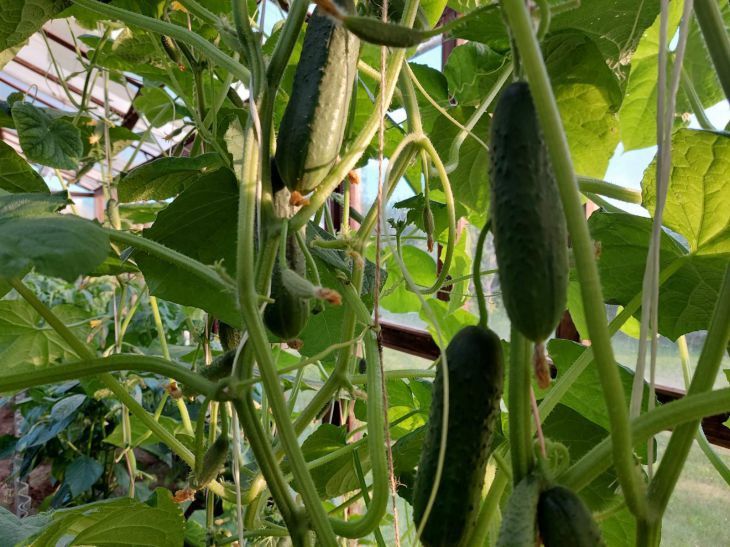Every gardener dreams of juicy and sweet cucumbers, but it often happens that the vegetables get an unpleasant bitter taste.
This becomes a real problem, especially after long efforts of cultivation.
Bitterness in cucumbers can be caused by improper watering, stressful conditions, or failure to meet agricultural requirements.

How to water cucumbers correctly to avoid this unpleasant phenomenon?
The Effect of Stress on the Taste of Cucumbers
Cucumbers are very sensitive to growing conditions.
Stress factors such as sudden changes in temperature, lack of moisture or excessive light can lead to the accumulation of cucurbitacins in the fruit, substances that cause the bitter taste.
Proper watering helps minimize stress and provide the plant with comfortable conditions for growth.
Frequency and time of watering
The first rule of successful watering of cucumbers is regularity. Cucumbers need stable soil moisture.
They should be watered in the morning or evening to avoid moisture evaporation during the hot daytime hours.
Morning dew soaking into the soil helps maintain moisture, and evening watering gives plants time to soak up moisture overnight.
Amount of water for irrigation
It is important to know the measure: excess water can be as harmful as its lack. Cucumbers like moist, but not flooded soil.
The optimal amount of water is about 10 liters per square meter of the garden bed.
During the flowering and fruit formation period, the need for water increases, so monitor the condition of the soil and moisten it as needed.
Water temperature
Water temperature also plays an important role. Cold water can shock plants, slowing their growth and causing bitterness.
Use warm water, heated to the ambient temperature. This will create comfortable conditions for the root system and improve moisture absorption.
Irrigation methods
There are several irrigation methods that can be used for cucumbers. One of the most effective is drip irrigation.
It ensures uniform flow of water to the roots, preventing the soil from drying out or becoming waterlogged.
An alternative would be to use a watering can with a long spout for spot watering at the roots.
Maintaining soil moisture
Use mulch to maintain constant soil moisture.
Covering the soil with a layer of organic material, such as straw or sawdust, helps retain moisture and prevent it from evaporating quickly.
Mulching also improves the soil structure and promotes better root development.
Disease prevention
Excessive moisture can lead to the development of fungal diseases such as powdery mildew or root rot.
To avoid this, ensure good ventilation of plants, avoid getting water on leaves and stems, and regularly remove damaged and diseased parts of plants.
Fertilizing and watering
Proper watering should be combined with plant feeding. Lack of nutrients can also cause bitterness in cucumbers.
Use organic fertilizers or mineral complexes containing nitrogen, phosphorus and potassium.
It is best to fertilize during watering so that the nutrients reach the root system faster.
Taking into account climatic conditions
When watering cucumbers, take into account the climatic conditions of your region.
In hot and dry weather, plants need more frequent watering, and in cool and rainy weather, less.
Check soil moisture regularly and adjust watering according to weather conditions.
Why monitor the condition of plants
Monitor the condition of the plants. Leaves that turn yellow or curl may indicate problems with watering.
Inspect plants regularly for signs of stress or disease and take steps to correct them.
Earlier we told you what needs to be done to make an apricot bear fruit.


